Dimple Kapadia (born 8 June 1957) is an Indian actress predominantly appearing in Hindi films. Born and raised in Mumbai by wealthy parents, she aspired to become an actress from a young age and received her first opportunity through her father’s efforts to launch her in the film industry. She was discovered at age 14 by the filmmaker Raj Kapoor, who cast her in the title role of his teen romance Bobby (1973), which opened to major commercial success and gained her wide public recognition. Shortly before the film’s release in 1973, she married the actor Rajesh Khanna and quit acting. Kapadia returned to films in 1984, two years after her separation from Khanna. Her comeback film Saagar, which was released a year later, revived her career. Both Bobby and Saagar won her Filmfare Awards for Best Actress. Through her work over the next decade, she established herself as one of Hindi cinema’s leading actresses.
While her initial roles often relied on her perceived beauty and sex appeal, Kapadia was keen to challenge herself and expand her range. She was among the first actresses who starred in women-centred Hindi action films but found greater favour with critics when she took on more dramatic roles in both mainstream and neorealist parallel cinema. Appearing in films ranging from marital dramas to literary adaptations, she played troubled women sometimes deemed reflective of her personal experience, and received acclaim for her performances in Kaash (1987), Drishti (1990), Lekin… (1991), and Rudaali (1993). For her role as a professional mourner in Rudaali, she won the National Film Award for Best Actress and a Filmfare Critics Award. Around the same time, Kapadia accepted character roles in Prahaar (1991), Angaar (1992), Gardish (1993) and Krantiveer (1994), the latter securing her another Filmfare Award.
Starting in the mid 1990s, Kapadia became more selective about her work, and her screen appearances in the following decades were fewer. She was noted for her portrayal of middle-aged, complicated women courted by younger men in Dil Chahta Hai (2001) and the American production Leela (2002). Her later credits include leading roles in Hum Kaun Hai? (2004), Pyaar Mein Twist (2005), Phir Kabhi (2008), Tum Milo Toh Sahi (2010) and What the Fish (2013), but she attained more success with character roles in Being Cyrus (2006), Luck by Chance (2009), Dabangg (2010), Cocktail (2012) and Finding Fanny (2014). Some of these roles were cited in the media as a departure from the regular portrayals of women of her age in Hindi films. Roles in the Hollywood thriller Tenet (2020), action film Pathaan (2023), as well as the web series Saas, Bahu Aur Flamingo (2023), brought her further recognition. Kapadia is the mother of Twinkle Khanna and Rinke Khanna, both of whom are former actresses.
Background and Personal Life
Dimple Kapadia was born on 8 June 1957 in Bombay to Gujarati businessman Chunibhai Kapadia and his wife Bitti, who was known as “Betty”. Chunibhai was from a wealthy Ismaili Khoja family, whose members had “embraced Hinduism” while still regarding Aga Khan as their religious mentor. Bitti was a practicing Ismaili. As an infant, Dimple was given the name Ameena (literally, “honest” or “trustworthy” in Arabic) by Aga Khan III, by which she was never referred to. She is the eldest of four children; her siblings—all of whom have died—were sisters Simple (also an actress) and Reem, and a brother, Suhail.
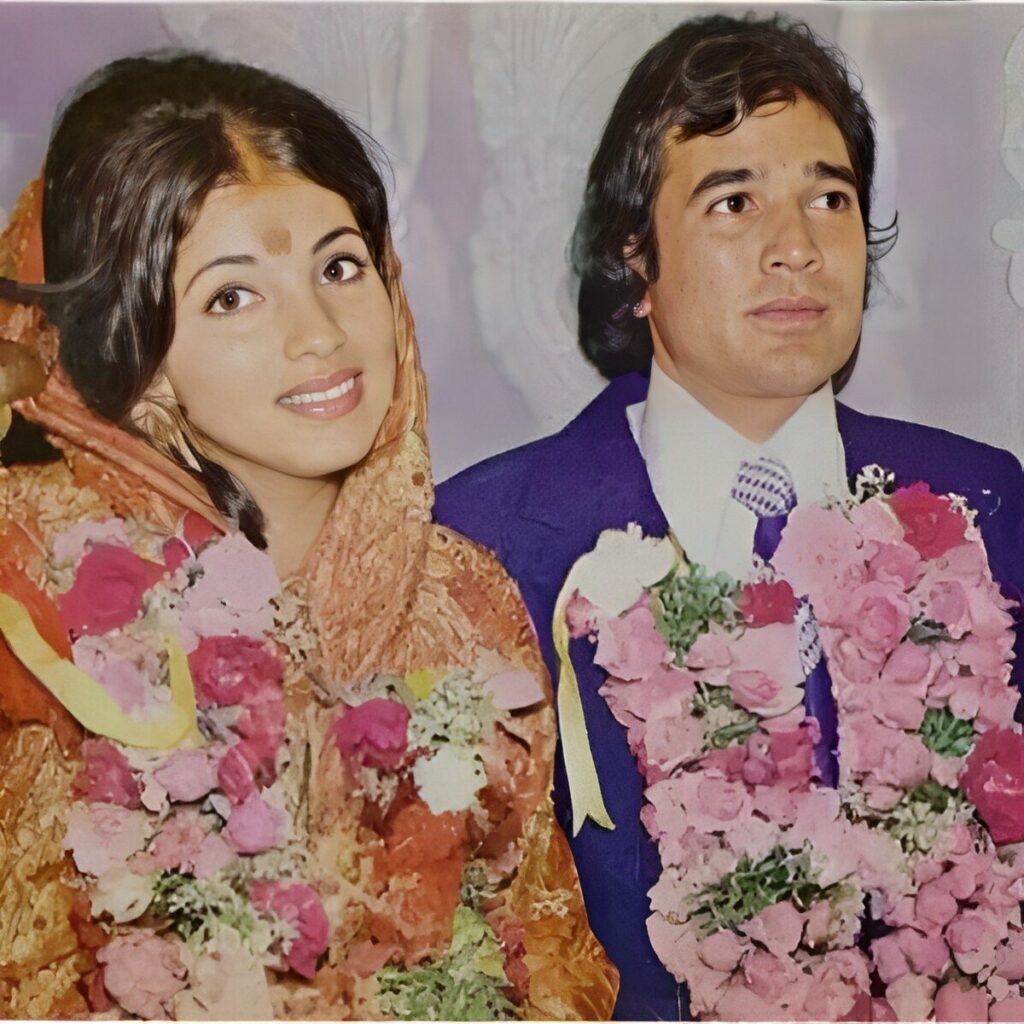
The family resided in the Bombay suburb Santacruz, where Kapadia studied at St Joseph’s Convent High School. She described herself as having matured quickly, and often made friends with children older than herself. Her father was disowned by his conservative family after she was cast for her first film Bobby in 1971. At age 15, she married the actor Rajesh Khanna, then aged 30, after a short courtship. Having been a fan of Khanna, she later said the wedding was the “biggest high” of her life during this period. It was performed according to Arya Samaj rites on 27 March 1973 in her father’s bungalow in Juhu, six months before the release of Bobby. At her husband’s behest, Kapadia quit acting following the marriage. She gave birth to two daughters, Twinkle (born 1974) and Rinke (born 1977).
Kapadia separated from Khanna in April 1982 and returned with her two daughters to her parents’ house. She returned to acting two years later. In a 1985 interview with India Today, she remarked, “The life and happiness in our house came to an end the day I and Rajesh got married”, saying her unhappy marital experience had included inequality and her husband’s infidelity, and called their marriage “a farce”. The hostility between Khanna and Kapadia, who were never officially divorced, subsided over the years; despite not having ever reunited, they were seen together at parties; Kapadia acted opposite Khanna in his unreleased film Jai Shiv Shankar in 1990 and campaigned for his election to the Indian National Congress a year later. Her daughters similarly became actresses and retired after settling down. Her elder daughter Twinkle is married to the actor Akshay Kumar. Asked in Filmfare in 2000 whether she would want to remarry, Kapadia said: “I’m very happy and content … once was more than enough”. Khanna fell ill in early 2012, and Kapadia stayed by his side and took care of him until his death on 18 July that year. She was with him when he died and said his loss, along with the deaths of her sister Simple and her brother, left her feeling “truly abandoned”.
Read More: Tara Sutaria | Ileana D’Cruz
Kapadia is an art lover and has experimented with painting and sculpture. In 1998, she started a new company called The Faraway Tree, which sells candles that she designs. Having been a candle enthusiast and finding candle-making therapeutic, she went to Wales and took a workshop with Blackwood-based candle artist David Constable. According to the Indian press, Kapadia’s business venture has inspired other candle enthusiasts to start similar businesses. Her candles were presented and offered for sale at a number of exhibitions.
Dimple Kapadia Age Boyfriend Husband Family Biography
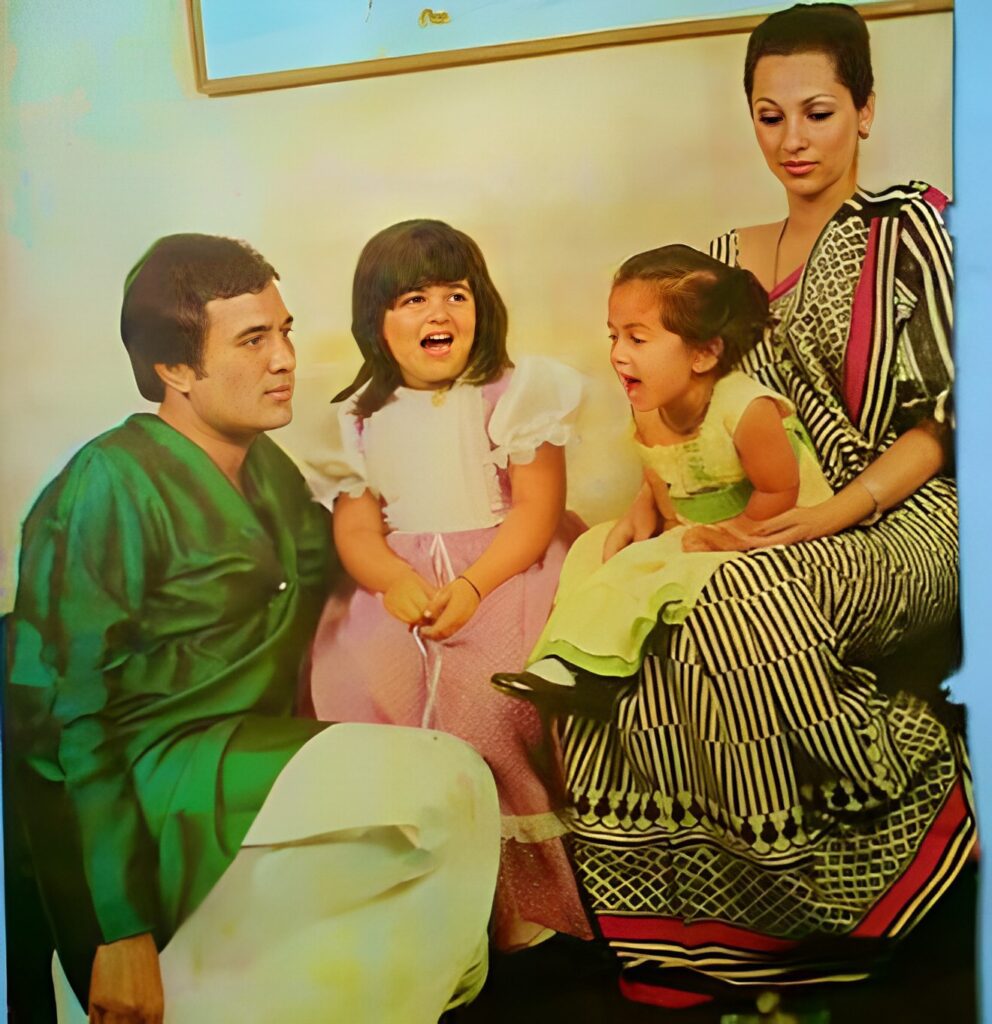
| Bio | |
|---|---|
| Real Name | Dimple Kapadia |
| Nickname | Not Known |
| Profession | Actress |
| Physical Stats & More | |
| Height (approx.) | in centimeters- 161 cm in meters- 1.61 m in Feet Inches- 5’ 3” |
| Weight (approx.) | in Kilograms- 58 kg in Pounds- 128 lbs |
| Figure Measurements (approx.) | 35-28-36 |
| Eye Colour | Brown |
| Hair Colour | Brown |
| Personal Life | |
| Date of Birth | 8 June 1957 (Saturday) |
| Age (as of 2023) | 66 Years |
| Birth Place | Not Known |
| Zodiac sign/Sun sign | Gemini |
| Nationality | India |
| Hometown | Mumbai, India |
| School | St. Joseph’s Convent High School, Mumbai |
| College | Not Known |
| Educational Qualification | Not Known |
| Debut | Film: Bobby (1973) |
| Family | Father– Chunnibhai Kapadia Mother– Betty Kapadia Brother– Munna Sisters– Late Simple Kapadia, Reem |
| Religion | Hinduism |
| Address | Samudra Mahal, Birla Lane, Juhu, Mumbai 400049 |
| Hobbies | Traveling, Reading, Listening to Music, Doing Yoga |
| Favorite Things | |
| Favorite Food | Bhutta Curry |
| Favorite Colors | Red, Brown |
| Favorite Song | Yaara Sili Sili, Jaane Do Na |
| Favorite Actors | Amitabh Bachchan, Jackie Shroff |
| Boys, Affairs and More | |
| Marital Status | Divorced |
| Affairs/Boyfriends | Rishi Kapoor, Actor Sunny Deol, Actor |
| Husband | Late Rajesh Khanna, Actor (m. March 1973, div. April 1982) |
| Marriage Date | March 1973 |
| Children | Son– N/A Daughters– Twinkle Khanna, Rinke Khanna |
| Money Factor |
|
| Net Worth (approx.) | $10 million |
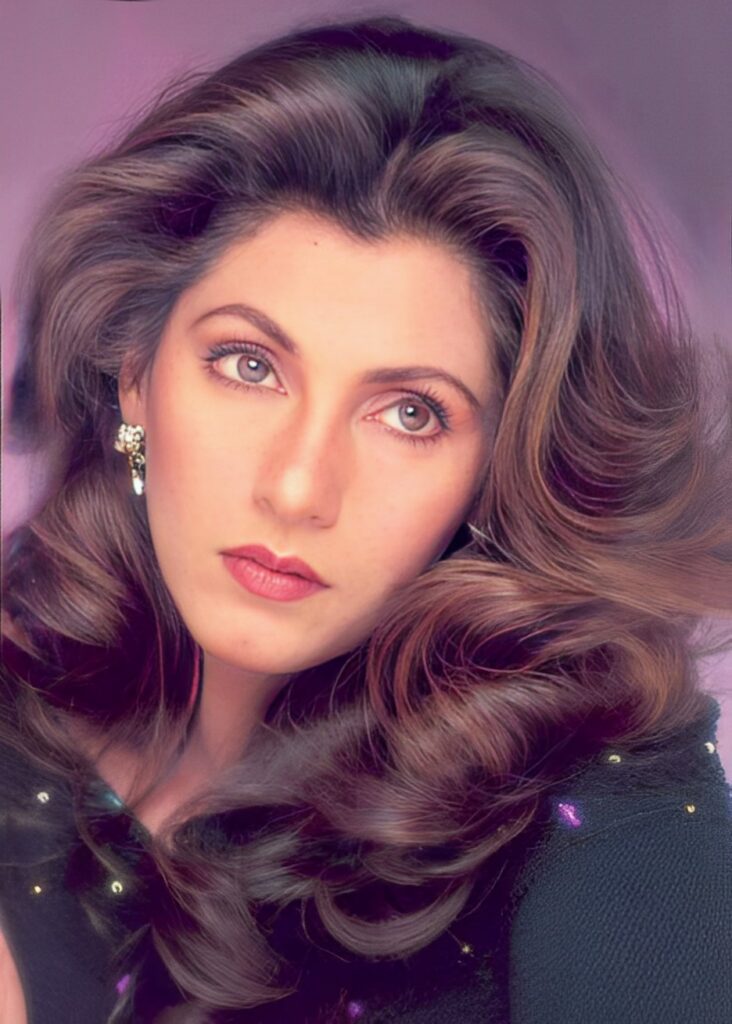
Career
Debut and Stardom (1973)
Kapadia, who was an avid movie viewer, aspired to be an actor since childhood. Her acting career was initiated by her father, who socialised with film-industry professionals and frequented parties hosted by screenwriter Anjana Rawail. Through his contacts, Dimple was almost cast to play the younger version of Vyjayanthimala’s character in H. S. Rawail’s Sunghursh (1968), but was eventually rejected because she looked older than the part called for. After she turned down an offer to play the protagonist in Hrishikesh Mukherjee’s Guddi in 1970, another opportunity arose in 1971 when Raj Kapoor was looking for a young, new female lead for his planned teen romance. Munni Dhawan, a close friend of Kapoor, suggested he consider Kapadia, having been acquainted with her father. In June that year, at the age of 14, Kapadia performed a screen test for the film on the sets of one of Kapoor’s productions. Impressed with her spontaneity and improvisation, Kapoor cast her in the part. The film, which was named Bobby, was released in September 1973. It starred Kapoor’s son Rishi Kapoor as Raj Nath, the son of a wealthy Hindu businessman, and Kapadia was given the title role of Bobby Braganza, the teenage daughter of a Christian fisherman from Goa. The story follows the love affair between Raj and Bobby in the face of his parents’ disapproval of their relationship due to class prejudice.
Bobby was a major commercial success—India’s highest-grossing film of the year and ultimately second-earning film of the decade—and Kapadia was lauded for her performance, which won her the Filmfare Award for Best Actress (tied with Jaya Bhaduri for Abhimaan). Qurratulain Hyder of The Illustrated Weekly of India noted she acted with “natural ease and freshness”. Several of Kapadia’s lines in the film became popular, particularly, “Mujhse dosti karoge?” (“Will you be my friend?”), and the “miniskirts, midriff-baring polka dot shirts, and fabled red bikini” she wore made her a youth fashion icon in India. Consequently polka-dotted dresses were often referred to as “Bobby Print”. Bhawana Somaaya of The Hindu credits Kapadia with starting the merchandising of film memorabilia in India, and Mukesh Khosla of The Tribune said Bobby established her as a “cult figure” because she led the fashion trends. In later years, Kapadia credited Raj Kapoor for her development as an actor: “The sum total of me today as an actress, whatever I am, is Raj Kapoor”. In 2008, Raja Sen from the web portal Rediff.com ranked her performance in Bobby as the fourth-best female debut of all-time in Hindi cinema: “An elfin little girl with big, lovely eyes, nobody quite portrayed innocence as memorably as Dimple in her first outing. She was candid, striking, and a true natural … here was a girl who would redefine glamour and grace, and make it look very, very easy indeed.”
Comeback and early fluctuations (1984–1986)
Kapadia returned to acting in 1984, two years after her separation from Khanna, saying she had a personal need to prove her own capabilities to herself. Over the next decade, she became one of the leading female actors in Hindi cinema. Her first post-hiatus film was Saagar; a mutual friend had notified the director Ramesh Sippy about Kapadia’s willingness to return to acting, and she was invited to audition for the part. She considered her screen test unsuccessful because she was “literally shivering” while performing it, but Sippy cast her to play the lead part opposite her Bobby co-star Rishi Kapoor. Scripted with her in mind, the film was intended to be her comeback vehicle but its one-year delay meant several of her later projects were released before, the first of which was Zakhmi Sher (1984).
Other films released before Saagar include Manzil Manzil (1984), Aitbaar (1985) and Arjun (1985). Kapadia appeared opposite Sunny Deol in Manzil Manzil, a drama that was directed by Nasir Hussain. While speaking of her positive experience during the making of the film, she felt uncomfortable performing the routine song-and-dance nature of the part. Her work was deemed ineffective by Trade Guide, and The Illustrated Weekly of India reported her career prospects entirely depended upon the fortunes of her next few projects. Kapadia received positive reviews for her part in Mukul Anand’s Hitchcockian thriller Aitbaar. She starred as Neha, a wealthy young woman whose greedy husband (Raj Babbar) plots to murder her. Discussing her performance, she said she was “a bag of nerves” while filming, which benefitted her performance because her own state coincided with her character’s inner turmoil. She was cast opposite Sunny Deol for a second time in Rahul Rawail’s action film Arjun; it was her first commercial success since her return to films.
Saagar premiered in August 1985 and was controversial for several scenes featuring Kapadia, including one in which she was seen topless for less than a second. The film was chosen as India’s official entry to the 58th Academy Awards for Best Foreign Language Film. Kapadia’s performance as Mona D’Silva, a young Catholic woman who is torn between her friend (Kamal Haasan) and the man she loves (Kapoor), reestablished her position in the film industry and won her a second Best Actress award at the Filmfare Awards. A reviewer in Asiaweek appreciated the film for its “polished narration and masterly technique” and labelled Kapadia “a delight”. According to Rediff.com, Kapadia “performed solidly and memorably, grounding the two male leads and making the film work”. A 1993 issue of India Today wrote: “Saagar was in many ways a paean to her incredible beauty. She looked ravishing: auburn hair, classical face, deep eyes, an aura of sensuality. It was clear she was back.”
Feroz Khan’s Janbaaz (1986), which is about a man fighting drug addiction, became known for a love scene in which Kapadia and male lead Anil Kapoor share a full-on kiss, a rare occasion in Hindi cinema at the time. The same year, she acted opposite Kamal Haasan in her first regional film, Vikram, a Tamil-language sci-fi feature, in the minor role of Inimaasi, a young princess who falls in love with Vikram (Haasan). At that time, she worked in numerous Hindi films made by producers from South India, including Pataal Bhairavi, which she detested. She later confessed to accepting these roles for financial gain rather than artistic merit: “I shudder even now when I think of those films. As an artiste I got totally corrupted.”
Limited work, Tenet and beyond (2015–present)
For the rest of the decade, Kapadia returned to film twice for minor roles in the action comedies Welcome Back (2015) and Dabangg 3 (2019). She played a conwoman in Anees Bazmee’s Welcome Back along with an ensemble cast led by Anil Kapoor and Nana Patekar. Dabangg 3, the third installment of the Dabangg film series, saw her briefly reprise the role of Naina Devi. In her first film of the 2020s, Kapadia appeared alongside Irrfan Khan and Kareena Kapoor in the comedy-drama Angrezi Medium (2020), her fourth project under Homi Adajania’s direction. A spiritual sequel to the 2017 film Hindi Medium, it was theatrically released in India on 13 March amid the COVID-19 pandemic, which affected its commercial performance due to the closing of cinemas. Initial plans for a re-release were cancelled and the film was made available digitally less than a month later. Kapadia played a strict store owner estranged from her daughter (Kapoor), a role Vinayak Chakravorty of Outlook thought was “used to highlight loneliness among the aged” but believed could have been stronger.
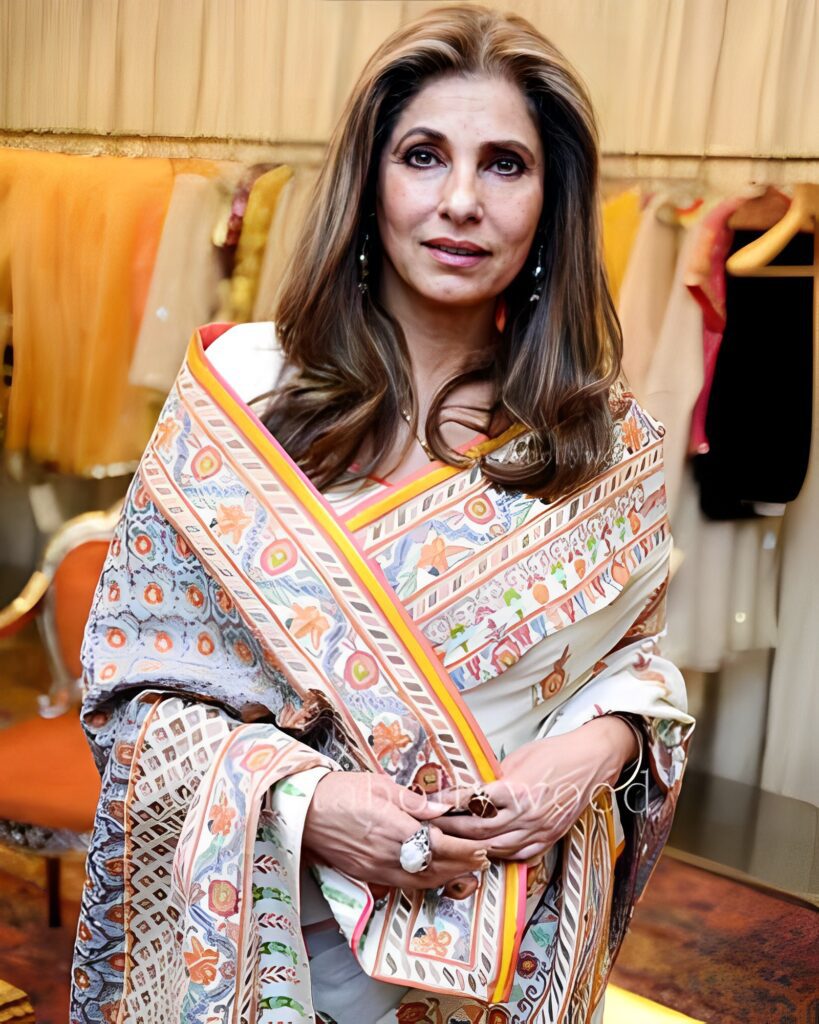
Kapadia next played arms dealer Priya Singh in Christopher Nolan’s spy thriller Tenet. Her screen test for the role was shot in 2019 by Adajania before filming for Angrezi Medium began, followed by an audition for Nolan in Mumbai. Impressed with her charisma and poise, Nolan, believing she embodied his vision of the character, cast Kapadia in the part. The film opened amid the pandemic to a worldwide audience and, having grossed $364 million worldwide, became the fifth-highest grossing film of 2020. Critics reacted positively to her performance; Richard Roeper of Chicago Sun-Times wrote Kapadia “quietly steals every scene she’s in” and Guy Lodge of Variety said she had given the film’s “wiliest performance”. Having admitted to being a reluctant actor for years, Kapadia credited Tenet with restoring her passion for film acting.
Ali Abbas Zafar’s 2021 Amazon Prime political web series Tandav starred Kapadia in her first appearance on a digital platform as Anuradha Kishore, a power-hungry politician who seeks to undermine the new political rival (Saif Ali Khan) of the Prime Minister of India, her longtime ally. The show opened amid massive protests and police complaints against its makers for allegedly insulting Hindu deities and hurting the religious sentiments of Hindus, following which Zafar cut several scenes and issued a formal apology. Reviewers responded variably to Tandav, but Kapadia’s efforts were better received. A Thursday (2022), Behzad Khambata’s vigilante-hostage thriller starring Yami Gautam, featured Kapadia in the fictional part of Prime Minister of India Maya Rajguru.
Kapadia had a cameo in Ayan Mukerji’s action fantasy Brahmāstra: Part One – Shiva (2022) and starred in Siddharth Anand’s action thriller Pathaan (2023), led by Shah Rukh Khan. In Pathaan, based in the YRF Spy Universe, she played Nandini, a senior officer in charge of a unit of Research and Analysis Wing (RAW) agents. Her performance was particularly picked up for praise. Sneha Bengani of CNBC TV18 was appreciative of her “sharp and graceful, commanding, yet restrained” performance. The film broke several box-office records to become the highest-grossing Indian film of 2023 and the second-highest-grossing Hindi film of all time.
A supporting role as the mother of Ranbir Kapoor’s character in Luv Ranjan’s romantic comedy Tu Jhoothi Main Makkaar (2023) brought Kapadia positive notice. Despite mixed reviews, the film enjoyed a strong run at the box office. Kapadia next reunited with Adajania for the Disney+ Hotstar crime thriller series Saas, Bahu Aur Flamingo, in which she played the protagonist Savitri, the powerful matriarch of a drug cartel selling a cocaine variant called flamingo. For the part, Kapadia was required to learn the local dialect to the fictional town of Runjh, located in northwest India. The show was well received and Kapadia earned rave reviews for her central performance. Shubhra Gupta, writing for The Indian Express, said Kapadia is “effortlessly in command of the room, and the situation”. She will also have a starring role opposite Pankaj Kapur in Saurabh Shukla’s Jab Khuli Kitaab, a romantic comedy about an older couple who seek divorce after 50 years of marriage.
Public image and Artistry
When Kapadia returned to films after her separation from Khanna, she faced constant comparison to her Bobby days and struggled to be taken seriously as an actor. According to Jyotika Virdi, the author of the book The Cinematic Imagination, while Kapadia’s trajectory is different from those of other female Hindi film stars, she turned her disadvantages to her advantage. Virdi said Kapadia’s forthright manner made a major contribution to her career: “Speaking candidly to the press, she and the reporters plotted her life’s narrative from the innocent teenager snared into an impossible marriage to the emergence of a mature ‘woman with experience’.” Kapadia is known for her assertive and moody nature; during the making of Janbaaz (1986), the director Feroz Khan said he had never met a woman with her levels of “pent-up aggression”. The journalist Bhawana Somaaya, who conducted a series of interviews with Kapadia during the 1980s, stated: “She’s a strange bundle of contradictions. Her moods change in a jiffy.” According to some critics, this approach has sometimes been at the cost of professional opportunities as “her unpredictable nature and moods have distanced many well wishers”. In reply to this, she said: “I am moody by nature. But I have never consciously hurt anyone.”
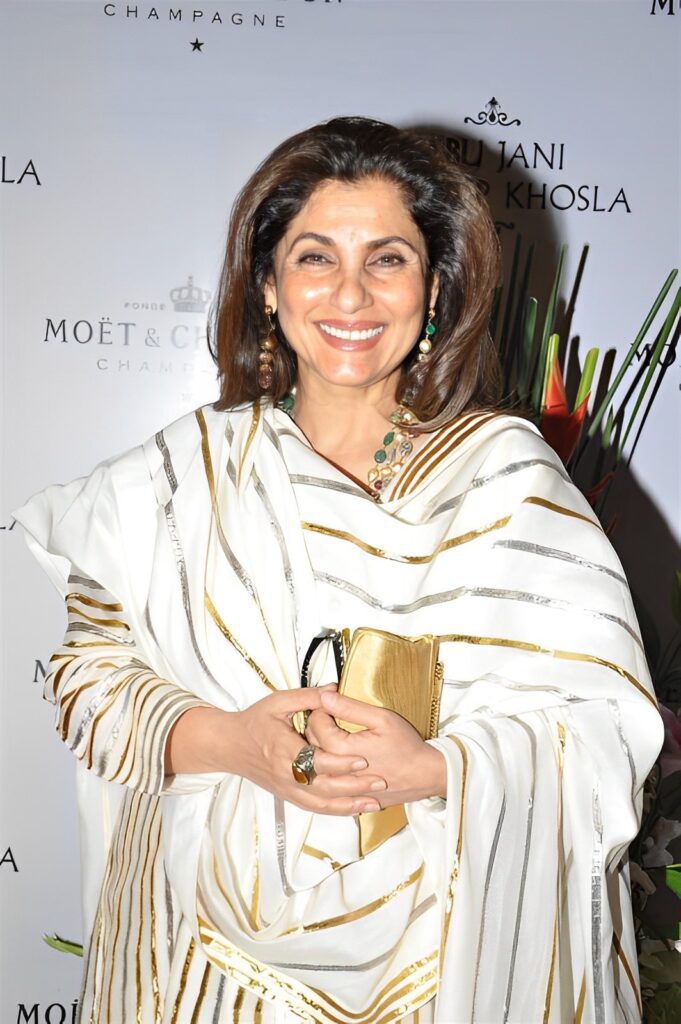
Virdi wrote Kapadia fought her way to success by committing to serious and challenging work and described her parts in Aitbaar (1985), Kaash (1987) and Drishti (1990) as characters with which she “drew from the well of her own experience”. With Zakhmi Aurat (1988), Kapadia became one of the mainstream actresses associated with a new wave of women-centred revenge films. As an action heroine, she chose to perform her own stunts, which the critic M. Rahman thought made her performance more convincing. Although she enjoyed working in similar projects, such as Mera Shikar (1988) and Kali Ganga (1990), she bemoaned about being paid less than male action stars. The author Dinesh Raheja believed Kapadia’s involvement in art films in the 1990s happened at a time when she was no longer willing to play the “pretty prop in hero-oriented films”, arguing her new choices “honed Dimple’s talent for lending fine striations to complex emotions”. Mahesh Bhatt commended her for not turning into “a victim of her own success” by refusing to appear in films of strictly commercial value. According to Govind Nihalani, the director of Drishti (1990), Kapadia has a genuine interest in serious work that would challenge her talent and realise her potential. Similar sentiments were shared by Shashi Kapoor, who said Kapadia had always been eager to act in quality films. Kapadia said her involvement in independent films was a conscious decision to experiment in different cinema and prove her abilities.
When questioned about her hiatus after Rudaali at her career peak, Kapadia said she needed space and that generally her “career has always been secondary” to her. Her infrequent work since then, which manifested in numerous gaps between her screen appearances, has gained her a reputation for being selective about her work. Admitting her limited professional drive, she attributed it to the lack of worthy offers and the “huge effort” expended in film acting, which consumes time otherwise spent on her family and private life. Even so, Kapadia’s later work was noted by film scholars, including Shoma Chatterji and Afreen Khan, who listed her among the female actors who represent a changing portrayal of mothers in Hindi films, with roles of women who consider their happiness to be of equal importance to that of their children. Similar thoughts were expressed by Mumbai Mirror’s Trisha Gupta, who was impressed with Kapadia’s diverse repertoire of maternal roles, ranging from Luck by Chance (2009) and Dabangg (2010) to Finding Fanny (2014). Guided by her own judgement, Kapadia normally commits to a project without seeking advice and often willingly works with young or first-time directors, finding their enthusiasm and creativity beneficial to both the film and her performance.
Kapadia’s screen image has been characterised in terms of her perceived beauty and sex appeal. The Times of India wrote in reference to her role in Saagar, “Dimple was a vision of lush beauty; quite the forbidden fruit, rising from the ocean like Aphrodite emerging from the waves and surf”. Speaking of her post-comeback screen persona, the critic Khalid Mohamed observed, “Her arsenal comprised, among other elements, expressive cognac eyes, a nuanced, resonating voice skilled in Hindustani dialogue delivery, easy body language, and that seductive toss of her auburn hair.” Mrinal Sen, who directed her in Antareen (1993), compared Kapadia to Sophia Loren and described her face as “a landscape of desolation”. Anil Kapoor, her co-star of Janbaaz, hailed Kapadia as the most beautiful Indian actress since Madhubala. According to Dinesh Raheja, Kapadia’s casting in Dil Chahta Hai (2001) and Leela (2002), in which she played middle-aged women who are the object of younger men’s desire, served as “a kind of tribute to her eternal beauty”. Emma Thomas, the producer of Tenet (2020), distinguished Kapadia as having “incredible magnetism, charisma, and glamour”, which made her the right choice for the film.
Critics have been appreciative of Kapadia’s acting prowess and some have analysed it in relation to her appearance. Ranjan Das Gupta called her “an instinctive actress, spontaneous and intelligent” who is best at playing “intense characters”, and said her beauty is “her asset as well as limitation”. In 1988, Subhash K. Jha wrote that “besides her elastic and primeval looks”, Kapadia “possesses an inbuilt instinct for grasping characters at a level way beyond the surface”. While working with her on Kaash (1987), Mahesh Bhatt said Kapadia had been through so much in her private life she need not study method acting to play real women. Academic writers Madhu Kishwar and Ruth Vanita of the feminist magazine Manushi noted Kapadia for being unafraid to look less attractive for the benefit of convincingly expressing anguish and emotion. M.L. Dhawan from The Tribune commented, “All those who have been following Dimple Kapadia’s career from Bobby, Lekin and Rudaali will assert that she is more talented than glamorous”. Kapadia has described herself as a “spontaneous actor who is guided by instinct” and on another occasion, “a competent actress yet to deliver her best”.
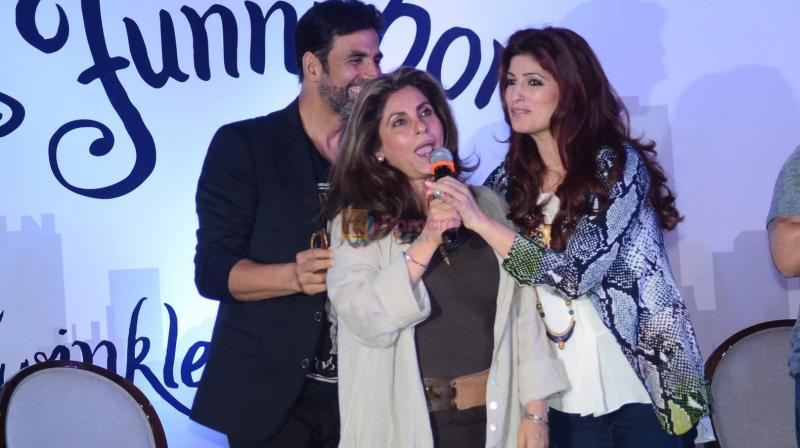
Filmography
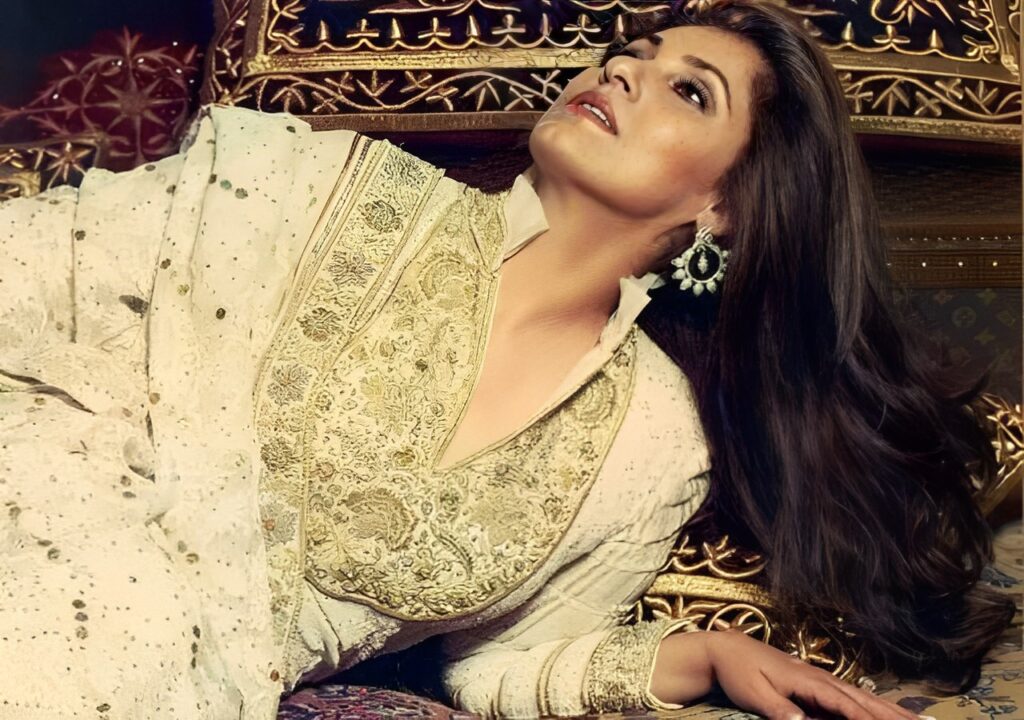
Television
| Year | Title | Role | Network |
|---|---|---|---|
| 2021 | Tandav | Anuradha Kishore | Amazon Prime Video |
| 2023 | Saas, Bahu Aur Flamingo | Savitri | Disney+ Hotstar |

1 Comment
Add a Comment